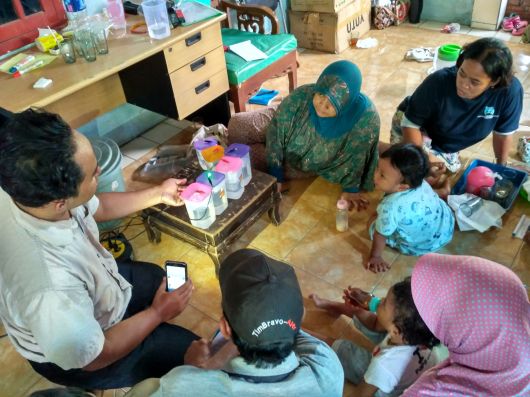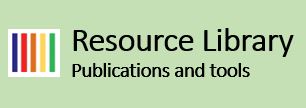03/07/2018 - Is community engagement becoming a drag in the sustainable development discourse?!

In line with the Conference's theme, one session delved deep into discussing how far community engagement must go. Provoking thoughts started to challenge today's popular narrative on the powerful role community engagement plays during investments: how much should communities be consulted? Is community consultation becoming a drag, time wasting especially when 'experts' have tried and tested technological theories, and have practice (experience) and lessons to apply to new contexts?
As the debate ensued, my brain moved quickly, as though in a transponder, to a trip I undertook early this year. A trip that defied every question on whether community engagement is important. Community engagement forms part of the very the fabric on popular sustainable development discourse. Developed countries have applied this approach in showing respect to their citizens and it is proven that involving civic voices advances governmental plans.
I visited the city of Nijmegen in The Netherlands in January 2018, as part of a learning programme facilitated by Partners for Resilience. About a third of The Netherlands is situated below sea level, and thus the country lives with the constant threat of floods. But the country moves one step ahead always after the devastating floods of the Province Zeeland in 1953. And now, with climate change raging on and global warming impacting the water levels in rivers in The Netherlands, risk reduction has never been more crucial. In Nijmegen, the city is part of the Netherlands-wide climate change adaptation project on the river expansion. Yes, the country is physically expanding the river so that when more waters come dashing down, there is Room for the River to hold the waters and not cause flooding. It is an impressive integrated risk management approach – that moves a theorical maze-sounding theory into action. Integration sounds simple, but in its simplicity also lies the complexity. For what my grey cells could process, I captured the following steps that the NL Government has applied in Nijmegen and keep in mind, my focus remains on the power of community voices:
- The Government at national level must have a vision- a vision for the future. This vision to benefit citizens must not be embedded in political greed for quick popularity gains to earn vote, but a vision that spans the interests of current generations and those to come. It is what sustainable development is about, right?! In 1995, river levels in The Netherlands reached extremely high levels - farming lands were inundated, some 250,000 people and about a million livestock were evacuated. The Government moved quickly to implement anti-flooding initiatives and Ruimte voor de Rivier- ‘Room for the River’ was born.
- Map risks at a landscape level: I visited the ‘Room for the River’ project in Nijmegen City. The fascinating part about it is that this is not Nijmegen-focused only. The area I visited is only a part of the project. Room for the River is coordinated in various cities, municipalities and regions as the risks of Nijmegen are not isolated from the rest of The Netherlands. So, for the river expansion initiative to be effective in Nijmegen, the risks in surrounding cities, and neighboring countries are all included in the ‘Room for the River’ risk reduction plan. Room for the River targets 39 locations across The Netherlands.
- Government allocates funds for disaster risk reduction through a statutory instrument. This is a no compromise position for The Netherlands. As a risk management strategy to live harmoniously with water, the country has a clear budget that goes into making NL a water safe country. Thus, no matter what government is in place, there is no fumbling with the ‘water-safe’ budget that tackles making cities safe. If governments change, this budget remains intact, and new governments simply carry on the work on risk reduction. As a politician, you cannot campaign on the basis on this budget, to move it around to suit your political interests and gain you votes. No, no…this is untouchable. Room for the River has an allocation of a whopping 2.2 million Euros and implemented between 2007 and 2016.
- Inter-disciplinary approach: there are currently 19 parties listed as cooperating entities for ‘Room for the River’. Listening in to the City Planner that took us on the tour of Nijmegen, it was clear that community engagement was core in this multi-billion-dollar partnership that have brought together engineers, culturists, urban planners, environmentalists, local leaders, various government policy officers on land, water, infrastructure, the financers, etc.
- Community perspectives are vital, and to every corner of the globe. Local voices and local knowledge create security for project implementors. If the locals are on your side, you may simply have doors opened to opportunities that could otherwise have been closed. Local acceptance creates security and reduces prospects for tensions when communication lines are open, and trust is built. And no matter your education level as an ‘expert’, local knowledge is power. Simply in Nijmegen, some community members and government officials had to negotiate for relocation of some families that needed to be moved because the river expansion project was going to cut through some residential homes. The meetings took place privately with those families who were to be affected but there were also Town Hall meetings where all communities could engage collectively. This ‘negotiation’ needed time, resources for consultations and relaying information that convinced the affected communities that this was being done for the greater good of the city and generations to come. Also, of course there was financial compensation for those that were affected.
This trip was fascinating! A powerful learning journey on seeing the theory on ‘integration’ into tangible action. And for me, I marveled at how the communities continue to be involved in this project at all levels.
For Partners for Resilience (PfR), an initiative supported by the Netherlands Ministry of Foreign Affairs, dialogues (alongside capacity building of local organisations), form a core component in advancing community resilience. Resilience to what? Resilience to risks from climate change impacts, ecosystem (mis)management as well as development spurred by huge investments (e.g. hard infrastructure) and trade projects (e.g. agriculture).
At the Adaptation Futures Conference, PfR hosted a debate titled “‘The best of both worlds: Technical and participatory approaches for urban resilience.” Panelists shared case studies from South Africa, Panama and Indonesia where they discussed different approaches applied to implement large scale infrastructure and community-based livelihood projects. Panelists and audience members concluded that there was no contest: Multi-stakeholder processes remain powerful to advance community resilience. There was consensus that these processes are hardly smooth-sailing, require substantial time and financial resource investments for relationships and trust to be built between those wielding power and those in vulnerable positions. Reaching consensus requires trade-offs between negotiating parties and more often than less, no one party gets always with everything they wish for. It’s a compromise that is reached.
Another observation made was that practitioners advancing the power of community engagement must start to demonstrate the negative effects of lack of engagement. One speaker intervened to demonstrate this point giving an example of deadly tensions that mounted in Kenya (Laikipia) in 2017. As climate change impacts rage on, droughts are impacting availability of arable land and water, and for poor communities, the impacts are felt severely. A British private rancher was killed in Laikipia (Kenya) when tensions arose between a drought-stricken community and his neighbouring sprawling private commercial ranch over access to green grazing grounds. Weeks into the tensions, local Civil Society Organisations (CSOs) played a role to facilitate dialogues for conflict resolution for a community that felt slighted in their own environment as they watched one community progress, while they regressed. The consequences of the clashes- a life lost, several others injured, the community ostracized and some aid pulled out and a public diplomatic row between Kenya and Britain played out in the newspapers.
In the examples given, Nijmegen kept resonating. If people are to have a buy-in into investments around them, they need to understand the benefits of what a project offers them and what is at stake if not advanced. Did the people in Laikipia see a value to their lives in this private ranch investment? What did they gain from it? Maybe some jobs for locals?!
For PfR representatives, the discussion challenging the power of community voices was exciting and a no-brainer because PfR’s experience is repeatedly proving the value of community engagements. Using an approach called integrated risk management, PfR advances some core principles in building resilience to climate change impacts, addressing development malpractices and ecosystem mismanagement:
- Putting people centre-stage, building on local and traditional resources and knowledge
- Linking humanitarian and development domains by focusing on livelihoods
- Addressing risk at the landscape scale
- Managing and restoring ecosystems
- Working on different timescales to ensure adaptive planning
- Linking local realities with global processes
- Integrating disciplines and approaches to encompass different risks
- Partnering with communities, civil society, governments, knowledge centres, the private sector, the media.
For these principles to be effective, collaboration between all concerned sectors is crucial. Part of that collaboration evolves around community engagement. A discount of one of the principles above simply disadvantages the whole process.
Thandie Mwape Villadsen is a Policy Advisor on the Netherlands Government-funded initiative Partners for Resilience. Thandie is based at the Netherlands Red Cross Cross Society.





